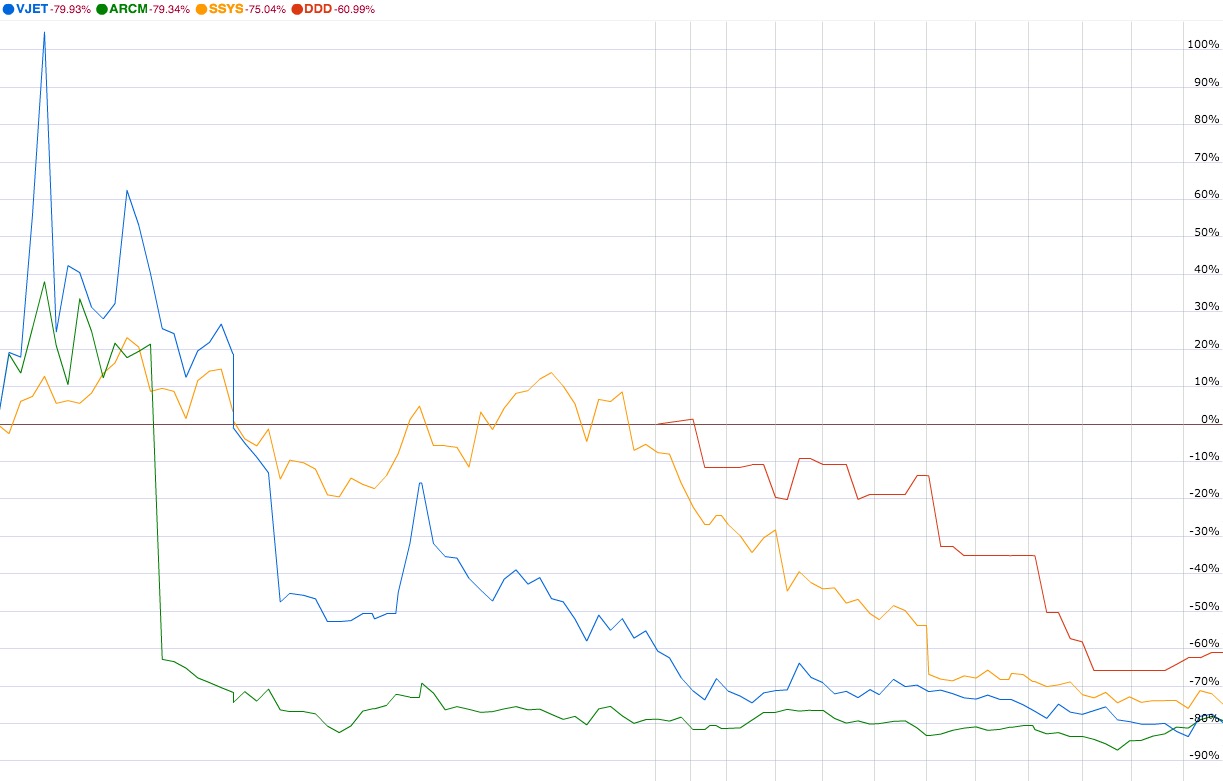
The stock price of many publicly-traded 3D printing companies remains flat or even low. Could China be the cause?
As you can see in the stock chart above, which tracks the relative price movements of several key 3D printer manufacturers’s stocks (VoxelJet, ARCAM, Stratasys and 3D Systems), you can see there’s been a bit of a dent in their price curve over the past few years. There are many reasons for this, but here’s a new one we just heard about: China.
If we take a long, wide look at the US manufacturer sector, over the past few decades much manufacturing work has been transferred to China, a country equipped with a large, available and inexpensive work force. Price competition drove the migration of the work, leaving those in the US wondering how, or even if, manufacturing could ever return en masse to that country.
Enter 3D printing into mass consciousness a few years ago. At the time, many pundits suggested that with this “new” technology (which in fact was actually 25+ years old and most people were just becoming aware of it), it may be possible for some manufacturing to return.
The idea was simple: Build things onsite cheaply with these new machines. Build things that were unique, unsuited for traditional mass-manufacturing that is now so widespread in China. This could bring back manufacturing!
Or could it?
Many seemed to believe this notion, and in part, that sentiment likely caused the price of non-China 3D printer company stocks to rise in 2012-2014.
But there seems to have been a flaw in the logic.
It turns out that China can also build 3D printers, too. And, have they ever done so! It is largely unknown in the West that there are huge numbers of 3D printer companies in China servicing that market. The competition is quite fierce and as a result, products have significantly improved and are quite technically advanced.
And they’re often not very expensive, either.
Thus, we now see a world where everyone can take advantage of 3D printing, including China – and the notion of 3D printing somehow rescuing Western manufacturing may not be as bright as once thought.

